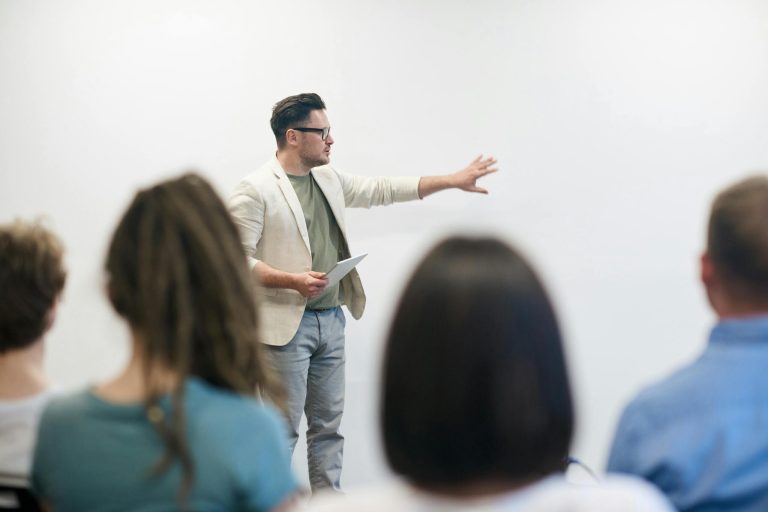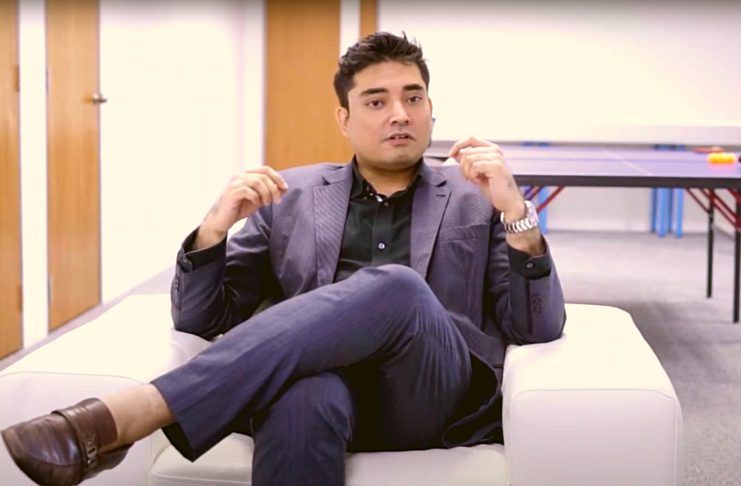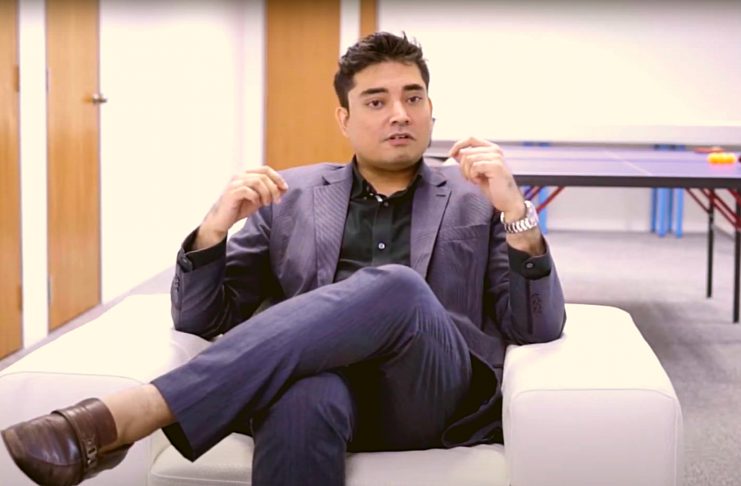
Sancy Suraj’s Memory Magic: The Key to Unforgettable Keynotes
Welcome to our article about Sancy Suraj’s Memory Magic and how it can help to create unforgettable keynotes. As the CEO of Knowles Training Institute, The Umonics Method, and Pinnacle Minds, Sancy Suraj is a highly respected memory athlete and trainer who has taught over 10,000 people worldwide. He has also set several records for his incredible memory feats, including one Guinness World Record and six Singapore Book of Records.
In this article, we’ll be diving into some of the key insights and strategies that Sancy Suraj uses to improve memory retention and recall, tailor his memory techniques to different types of learners, and deliver impactful keynotes that resonate with audiences.
Can you share some tips on how to improve memory retention and recall when giving a keynote speech?

Sure, I would be happy to share some tips on how to improve memory retention and recall when giving a keynote speech. As someone who has honed my memory skills through years of practice and training, I have found that there are several techniques that can be useful in this regard.
First and foremost, it is important to understand that memory is a skill that can be trained and improved with practice. One of the most effective ways to improve memory retention is through the use of visualization techniques. By creating vivid mental images of the information you want to remember, you can make it easier to recall later on. For example, if you are giving a keynote speech on a specific topic, you can create mental images that represent the key points of your speech. These mental images can then be used as cues to help you remember the information later on.
Another useful technique for improving memory retention and recall is the use of mnemonic devices. Mnemonic devices are memory aids that help you remember information by associating it with something else. For example, you can use acronyms or rhymes to remember key points in your speech. The key is to make the mnemonic device memorable and easy to remember, so that it can serve as a useful reminder when you are giving your speech.
In addition to these techniques, it is also important to practice active listening and engagement with your audience. By actively engaging with your audience, you can create a more memorable experience for them and improve your own ability to remember key points of your speech. This can be done through the use of interactive exercises, questions and answers, or other forms of audience participation.
In summary, improving memory retention and recall when giving a keynote speech requires practice and the use of effective techniques such as visualization, mnemonic devices, and active engagement with your audience. By incorporating these techniques into your preparation and delivery, you can create a more memorable and impactful keynote speech that will leave a lasting impression on your audience.
How do you tailor your memory techniques to suit different types of learners or audiences?
As a memory athlete and trainer, I understand that everyone has their own unique learning style and preferences. Therefore, I strive to tailor my memory techniques to suit different types of learners or audiences. Here are some of the ways I do this:
Visual Learners: Visual learners learn best by seeing things. To cater to these learners, I use visualization techniques such as creating mental images or mind maps to help them remember key points of a speech. I also use slides, graphics, or diagrams to supplement my presentation and make it more visually appealing.
Auditory Learners: Auditory learners learn best by hearing things. To cater to these learners, I use techniques such as repetition, rhyme, or rhythm to help them remember key points of a speech. I also use storytelling, humor, or music to make my presentation more engaging and memorable.
Kinesthetic Learners: Kinesthetic learners learn best by doing things. To cater to these learners, I use techniques such as interactive exercises or group activities to help them remember key points of a speech. I also use props, gestures, or body language to make my presentation more dynamic and interactive.
Multimodal Learners: Multimodal learners learn best through a combination of different senses and experiences. To cater to these learners, I use a variety of techniques such as visual aids, storytelling, interactive exercises, and humor to make my presentation more engaging and memorable.
In addition to these techniques, I also take into account the cultural and social background of my audience when tailoring my memory techniques. For example, some cultures may have different customs or taboos around certain topics or behaviors, and it is important to be mindful of these when designing a presentation.
Overall, my approach to tailoring memory techniques to suit different types of learners or audiences is to be flexible and adaptable, and to use a variety of techniques that cater to different learning styles and preferences. By doing so, I am able to create a more effective and impactful presentation that resonates with my audience.
Have you ever had a moment where your memory techniques failed you during a keynote speech? If so, how did you recover?
As someone who has spent years honing my memory skills, I have certainly had moments where my memory techniques failed me during a keynote speech. While these moments can be challenging, I have learned to recover by relying on several strategies.
First and foremost, it is important to stay calm and composed when faced with a memory lapse. Panicking or getting flustered can make the situation worse, and can make it harder to recover your memory. Instead, take a deep breath and try to remain focused.
One technique that can be helpful in recovering from a memory lapse is to use context cues. Context cues are pieces of information that can trigger a memory or association. For example, if you are struggling to remember a specific point in your speech, try to think about the context in which you first learned that point. This can help you to remember the information more easily.
Another technique that can be helpful is to use a memory palace or other mnemonic device. If you have memorized your speech using a memory palace, for example, you can retrace your steps through the palace to help trigger the memory of the point you are trying to remember.
In addition to these techniques, it is also important to be flexible and adaptable in your presentation. If you are struggling to remember a specific point, consider shifting the focus of your presentation to a related topic that you are more comfortable discussing. This can help you to regain your confidence and momentum, and can help to keep your audience engaged.
Overall, while experiencing a memory lapse during a keynote speech can be challenging, it is important to remain calm, focused, and adaptable in order to recover. By relying on context cues, mnemonic devices, and other strategies, you can overcome a memory lapse and deliver an effective and memorable presentation.
“Even the most skilled memory masters can experience memory lapses during a keynote speech. However, it is not the mistake that defines us, but how we recover from it. By staying calm, using context cues, and being adaptable in our presentation, we can overcome any memory lapse and deliver a powerful and unforgettable speech.”
Can you tell us about a particularly challenging memory feat you’ve accomplished and what you learned from it?
One of the most challenging memory feats that I have accomplished was memorizing a deck of cards in under a minute. This feat required me to memorize the order of an entire deck of 52 playing cards in less than 60 seconds.
To accomplish this, I used a technique called the memory palace. The memory palace involves visualizing a familiar location, such as a house or a street, and mentally placing each item that you want to remember in a specific location within that space. For example, I might place the Ace of Hearts on the kitchen counter, and the Four of Spades on the living room couch.
Memorizing a deck of cards in under a minute was an incredibly difficult task, and required a great deal of focus, dedication, and practice. However, through this experience, I learned several important lessons that have helped me in my career as a memory trainer.
First and foremost, I learned the importance of practice and repetition. In order to be successful in any memory feat, it is crucial to practice consistently and to commit the information to memory through repetition.
Secondly, I learned the importance of visualization and imagination. In order to memorize a deck of cards, I had to visualize each card as a distinct image and place it in a specific location within my memory palace. This required a great deal of imagination and creativity, and helped me to develop my visualization skills.
Finally, I learned the importance of setting goals and pushing oneself to achieve them. Memorizing a deck of cards in under a minute was a challenging goal, but by setting my sights on this feat and working tirelessly to achieve it, I was able to accomplish something that I once thought was impossible.
Overall, the experience of memorizing a deck of cards in under a minute was a difficult but rewarding challenge that taught me valuable lessons about practice, visualization, and goal-setting. These lessons have been invaluable to me in my career as a memory trainer and keynote speaker, and have helped me to help others unlock the power of their own memories.
How do you stay motivated to continually improve your memory skills and techniques?
As someone who has dedicated my life to the study of memory and mnemonics, staying motivated to continually improve my memory skills and techniques is essential. There are several strategies that I use to stay motivated and engaged in this pursuit.
Firstly, I try to stay up to date with the latest research and developments in the field of memory. This helps to keep me motivated and excited about the possibilities of what I can achieve with my own memory skills.
Secondly, I challenge myself to take on increasingly difficult memory feats and exercises. By constantly pushing myself out of my comfort zone, I am able to stay engaged and motivated, and am able to continue improving my memory skills over time.
Another important strategy is to celebrate small victories along the way. Improving your memory is a long-term process, and it is important to acknowledge and celebrate each small achievement along the way. Whether it’s memorizing a phone number or a grocery list, every success can help to build confidence and momentum towards achieving larger memory feats.
Finally, I also try to find ways to make the process of improving my memory skills fun and engaging. This might involve playing memory games or puzzles, or incorporating mnemonic techniques into everyday activities like cooking or exercising.
Overall, staying motivated to continually improve my memory skills and techniques is an ongoing process that requires dedication, persistence, and a willingness to challenge oneself. By staying up to date with the latest research, setting challenging goals, celebrating small victories, and finding ways to make the process fun and engaging, I am able to continue developing my memory skills and unlocking the full potential of my mind.
“Improving your memory is not a sprint, it’s a marathon. To stay motivated, you must celebrate every small victory, stay up to date with the latest research, challenge yourself to take on increasingly difficult memory feats, and most importantly, find ways to make the process of improving your memory skills fun and engaging.”
Sancy Suraj believes that there are several strategies that individuals can use to improve their memory retention and recall. One of his top tips is to engage multiple senses when learning new information, as this can help to create more connections in the brain and make the information more memorable. He also emphasizes the importance of repetition and spaced learning, where information is revisited at regular intervals, as a way to reinforce memory over time.
When it comes to tailoring memory techniques to different types of learners or audiences, Sancy Suraj highlights the need to understand individual learning styles and preferences. For example, some individuals may respond better to visual aids, while others may prefer to learn through auditory or kinesthetic methods. By taking the time to understand the needs and preferences of different learners, Sancy Suraj is able to adapt his teaching strategies to ensure that everyone is able to learn and retain information effectively.
Sancy Suraj is also no stranger to the occasional memory slip-up during a keynote speech. However, he emphasizes the importance of staying calm and collected in these situations, and having backup memory strategies in place to help recover. For example, if he forgets a specific point or example during a talk, he may be able to pivot to a related topic that he has memorized more thoroughly.
Can you explain the connection between memory and storytelling, and how this relates to delivering an impactful keynote?

Memory and storytelling are closely interconnected, and understanding this relationship is essential for delivering an impactful keynote. At its core, memory is essentially the ability to store and retrieve information, while storytelling involves using that information to create a narrative or convey a message.
When we listen to a story, our brains are wired to remember the information that is presented in a narrative form much more effectively than if the same information was presented in a more dry, factual manner. This is because stories engage the brain on multiple levels, triggering our emotions, imagination, and sense of curiosity, all of which help to cement the information in our memories.
In the context of delivering a keynote, using storytelling techniques can be a highly effective way to engage and connect with your audience, and to help them remember the key messages and takeaways from your talk. By weaving your message into a compelling narrative, you can make your ideas more relatable, memorable, and impactful.
One effective way to use storytelling in a keynote is to incorporate personal anecdotes or real-world examples that illustrate the points you are trying to make. By sharing your own experiences or observations, you can help to make your message more relatable and memorable for your audience.
Another effective technique is to use visual aids, such as images or videos, to help illustrate your points and make them more memorable. By linking your message to vivid and engaging visuals, you can help to create a more immersive experience for your audience, which can help to cement the information in their memories.
Ultimately, the connection between memory and storytelling is a powerful one, and by incorporating storytelling techniques into your keynote, you can create a more engaging, memorable, and impactful experience for your audience.
“Unlock the power of storytelling in your keynote to leave a lasting imprint on your audience’s memories. By weaving your message into a compelling narrative and engaging multiple senses, you can create a truly immersive experience that resonates long after your talk is over.”
In conclusion, Sancy Suraj’s Memory Magic offers valuable insights and strategies for improving memory retention and recall, tailoring memory techniques to different types of learners, and delivering impactful keynotes that resonate with audiences. By leveraging the power of storytelling and incorporating mnemonic techniques into his talks, Sancy Suraj is able to create a memorable and engaging experience for his audiences. Whether you’re looking to improve your own memory skills or create more impactful presentations, there is much to learn from Sancy Suraj’s approach to memory training and keynote speaking.